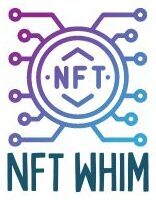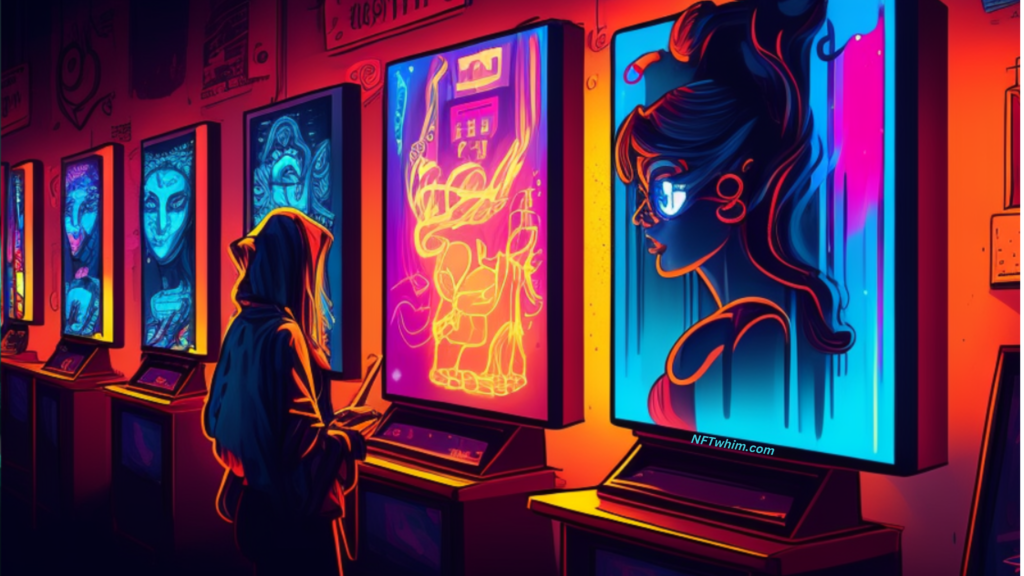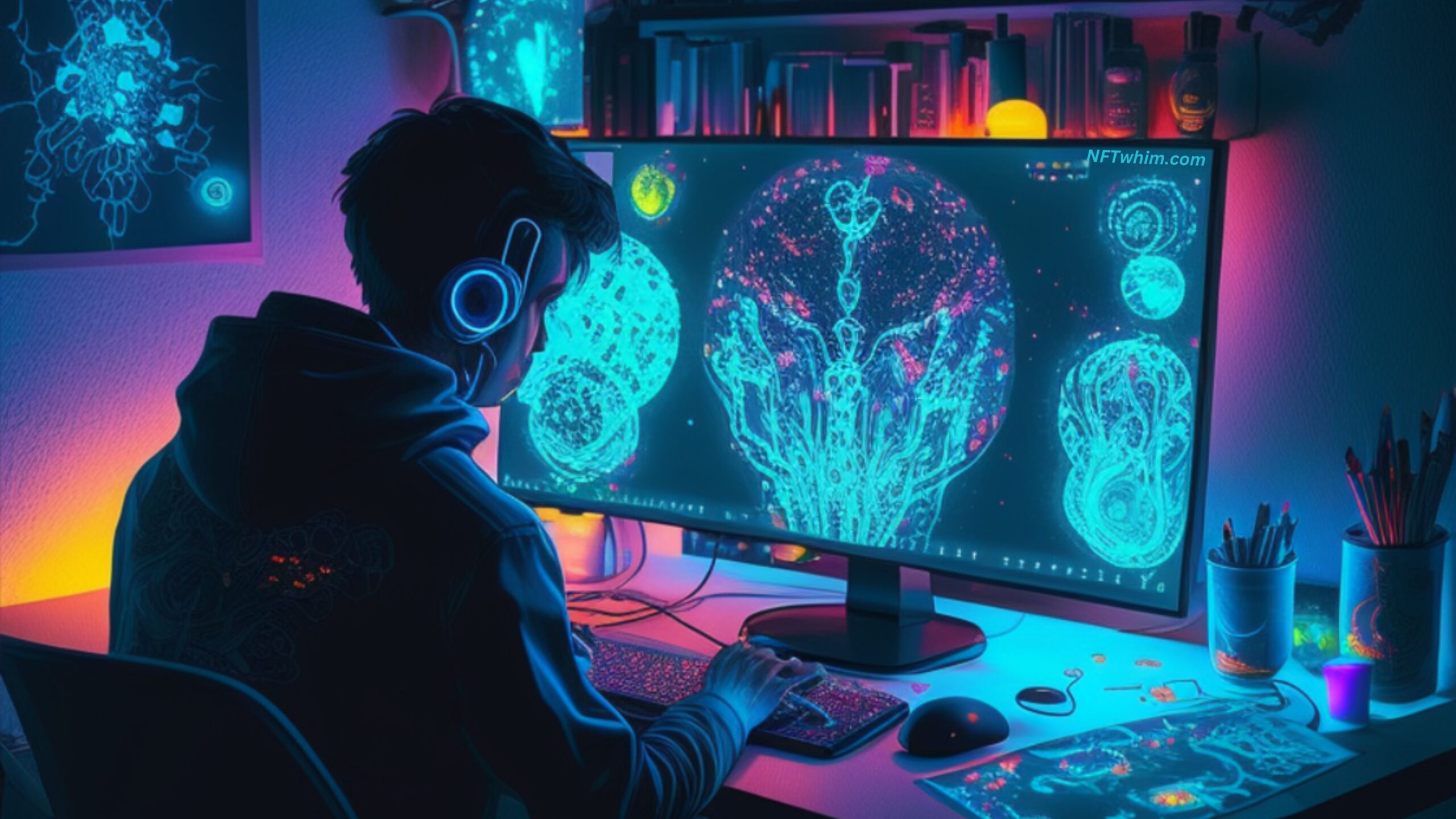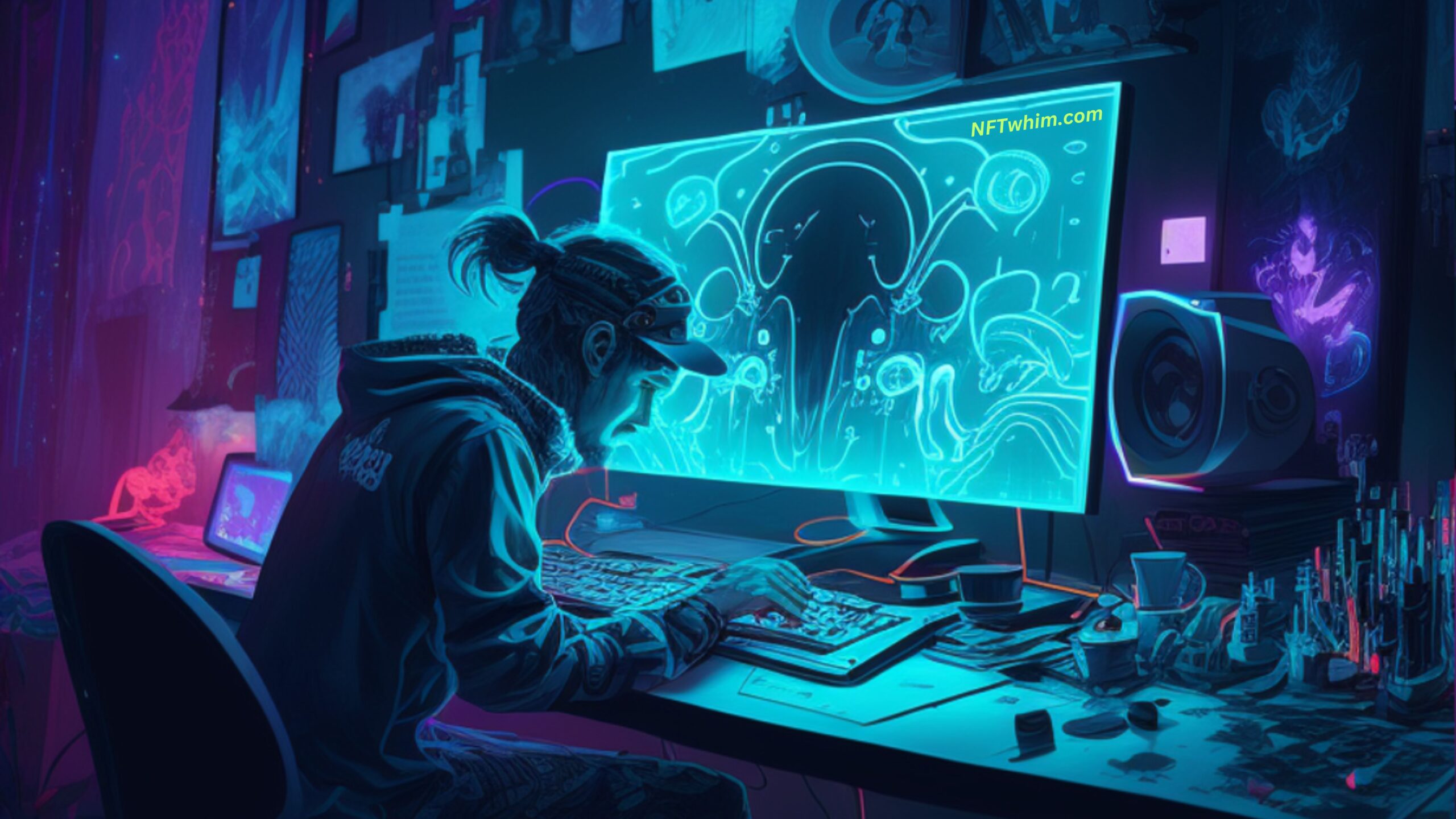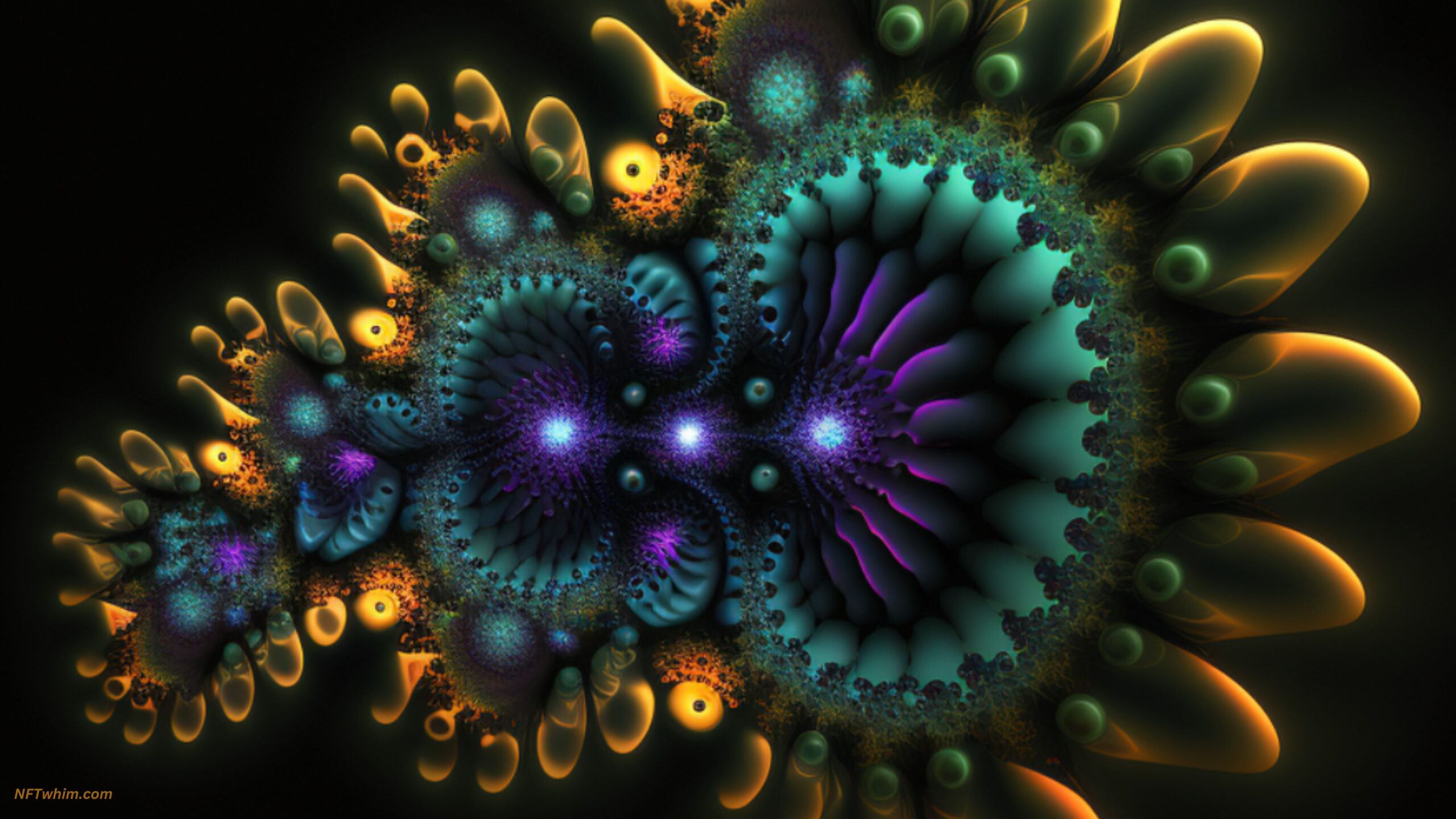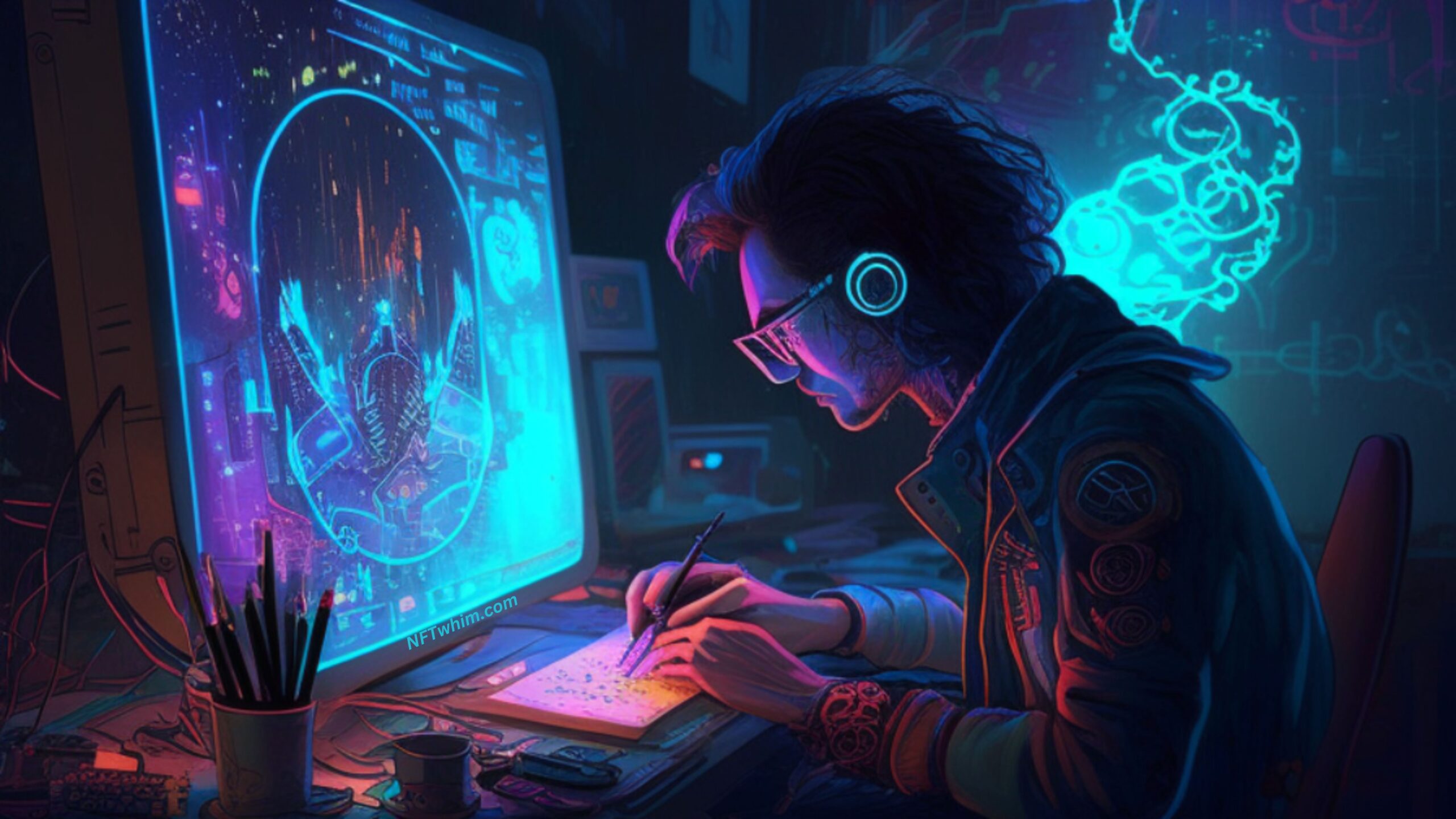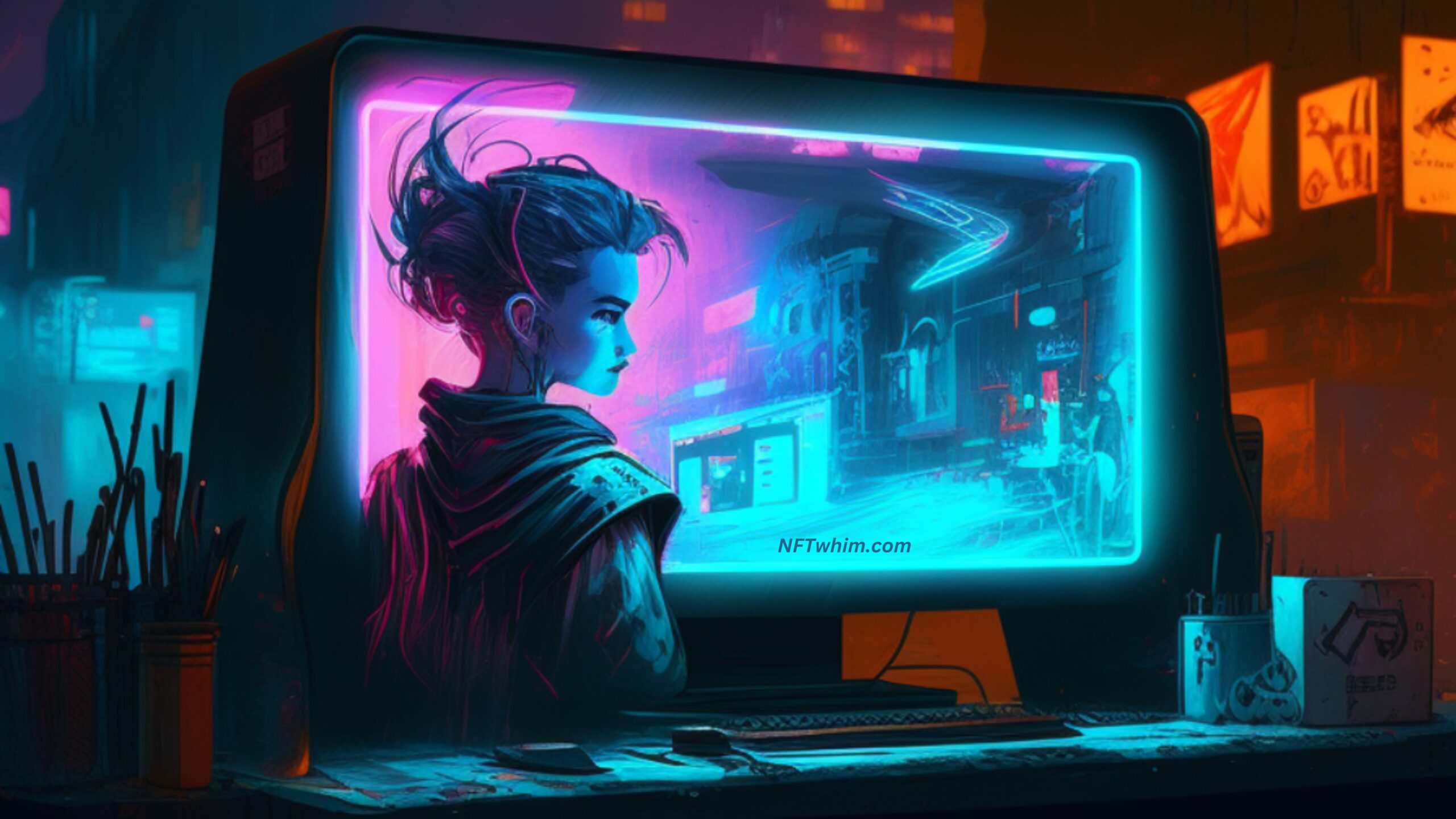In recent years, the art world has undergone a significant transformation due to the emergence of non-fungible tokens (NFTs) and blockchain technology. NFTs are unique digital assets that allow creators to sell and trade their digital creations in a secure and decentralized manner. This has created a new market for artists to showcase their work and connect with a global audience, leading to a surge in popularity for NFT art. But how do you start out in NFT Art as an aspiring creator?
To start out in NFT art as an aspiring creator, you need to understand the basics of blockchain technology, set up a crypto wallet, and create an account on an NFT marketplace. Once you have a marketplace account, you can start creating NFT art by choosing a style and medium, creating unique and valuable art pieces, mining them on the blockchain, and preparing them for sale. Finally, you should set a realistic price, promote your art on social media, and learn to navigate the NFT marketplace correctly to maximize your earnings and protect your assets.
Ok, let’s now dive into all the details!
Table of Contents
But before we start, you may also be interested in this linked deep-dive-article, which provides an ultimate roadmap of how to turn into a profitable NFT artist in any genre.
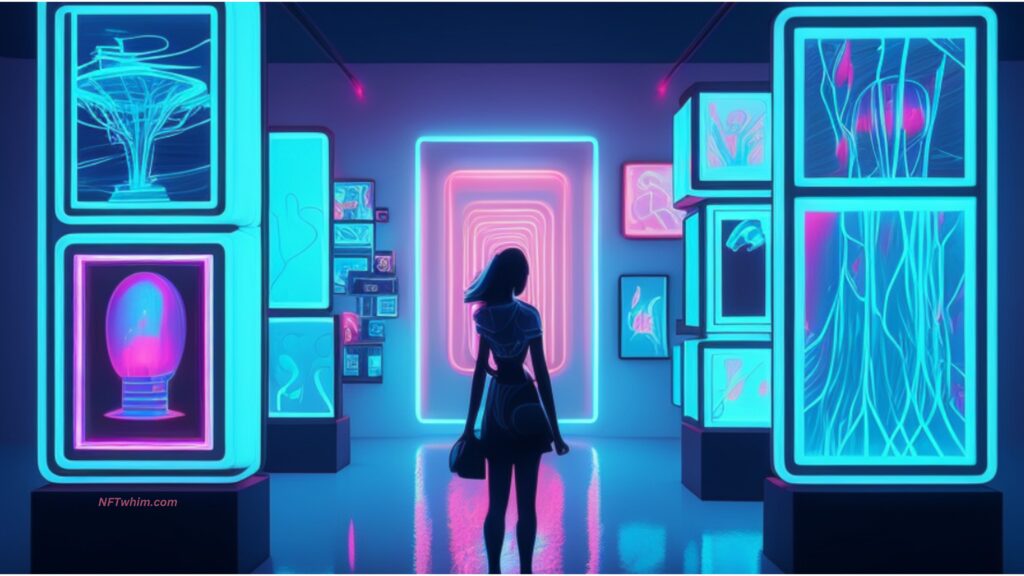
Why it’s a good time to start in NFT art
The rise of NFTs and blockchain technology has opened up a world of possibilities for artists to showcase their work in a new and exciting way. NFTs provide a secure and decentralized platform for creators to sell their digital art without the need for a middleman, such as a gallery or auction house. This means that artists can reach a global audience without the need for physical exhibitions or auctions, which can be expensive and time-consuming.
Furthermore, the demand for NFT art is increasing rapidly, with more and more collectors and investors entering the market every day. This has resulted in some NFT artworks selling for millions of dollars, making it an attractive and lucrative market for artists to explore.
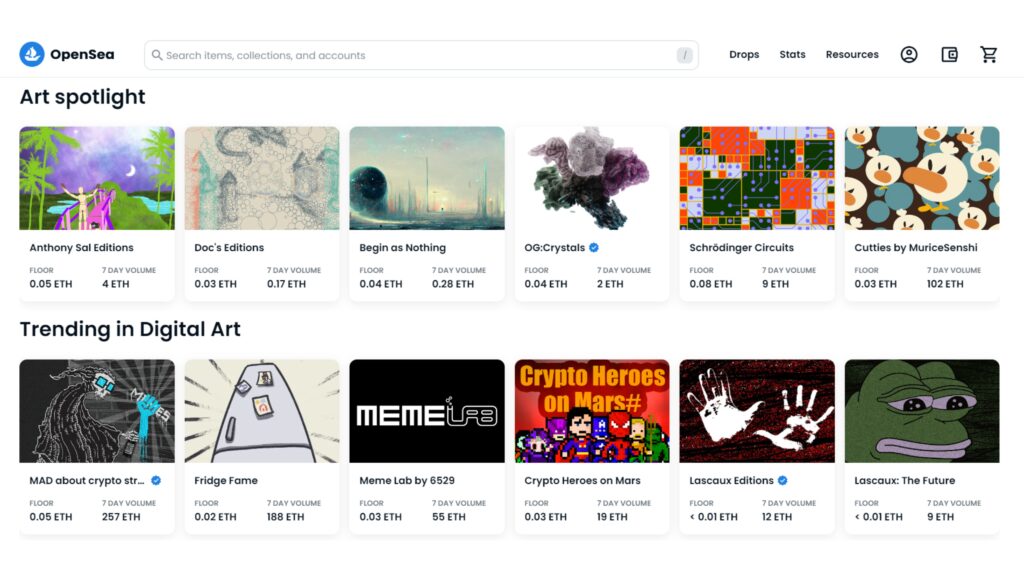
Getting Started in NFT Art
If you’re interested in exploring the world of NFT art, here are some key steps to help you get started:
Understanding the basics of blockchain technology
Blockchain technology is the underlying technology that powers NFTs. At its core, blockchain is a decentralized ledger that records transactions in a secure and transparent manner. This means that every transaction is recorded on a public ledger, which ensures that all transactions are transparent and cannot be altered.
To understand how blockchain technology works, it’s important to learn about the key concepts, such as blocks, nodes, and consensus mechanisms. There are many resources available online that can help you learn more about blockchain technology, including blogs, videos, and online courses.
Setting up a crypto wallet
Once you have a basic understanding of blockchain technology, the next step is to set up a crypto wallet. A crypto wallet is a digital wallet that allows you to store and manage cryptocurrencies, such as Bitcoin, Ethereum, and other tokens. There are many different types of crypto wallets available, including software wallets, hardware wallets, and mobile wallets. Most of these wallets are also capable of storing those of your NFTs that you do not want to keep at a marketplace.
It’s important to choose a wallet that is secure and easy to use. Some popular options include MetaMask, Trust Wallet, and Ledger. Each wallet has its own unique features, so it’s important to do your research and choose the one that best fits your needs.
Creating an account on an NFT marketplace
Once you have a crypto wallet set up, the next step is to create an account on an NFT marketplace. There are many different NFT marketplaces available, including OpenSea, Nifty Gateway, and SuperRare. Each marketplace has its own unique features, so it’s important to do your research and choose the one that best fits your needs.
When creating an account on an NFT marketplace, you’ll typically need to provide some personal information, such as your name and email address. You may also need to verify your identity by providing a government-issued ID or passport.
Once your account is set up, you can start exploring the marketplace and connecting with other artists and collectors.
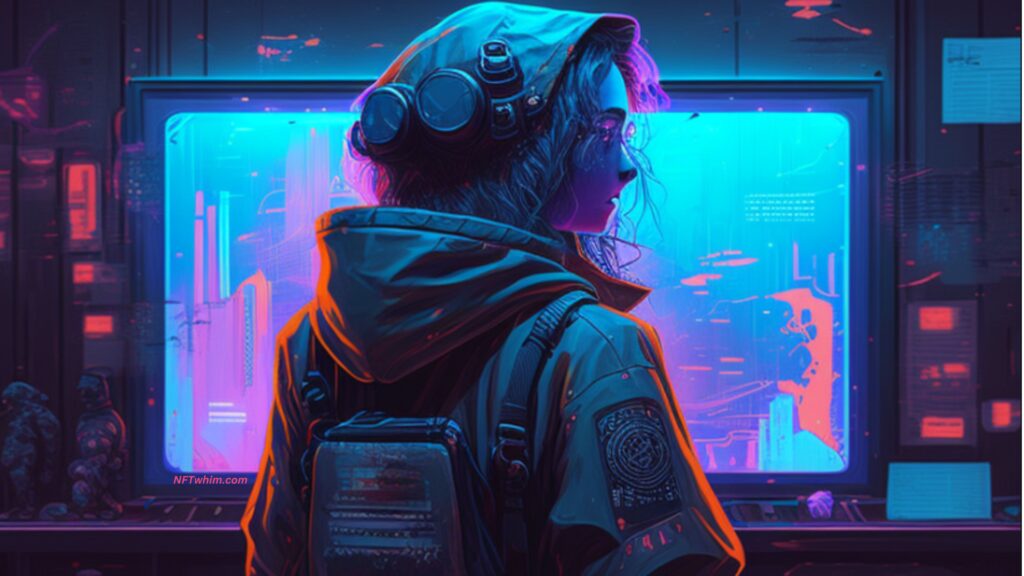
Creating NFT Art
Now that you have a basic understanding of blockchain technology and have set up a crypto wallet and NFT marketplace account, the next step is to start creating NFT art. Here are some tips to help you get started:
Choosing a style and medium
The first step in creating NFT art is to choose a style and medium that resonates with you and showcases your unique artistic vision. While digital art is a popular medium for NFTs, traditional art forms like painting, sculpture, and photography can also be turned into NFTs. When selecting a style and medium, consider your artistic strengths, interests, and the current trends in the NFT art market.
If you’re just starting out, it’s a good idea to experiment with different styles and mediums to find what works best for you. Consider taking an online course or attending workshops to learn new techniques and hone your skills. Joining online communities or social media groups focused on NFT art can also provide inspiration and help you stay up-to-date on the latest trends and techniques.
Creating unique and valuable art
To create successful NFT art, it’s essential to focus on creating unique and valuable pieces. While digital art can be replicated, each NFT is unique and can only be owned by one person, making rarity a key factor in determining the value of an NFT. Focus on creating one-of-a-kind pieces that stand out from the crowd and showcase your unique artistic style.
When creating NFT art, it’s also important to consider the technical requirements of the NFT format. NFTs must be in a specific format, typically a JPEG or PNG file, and must be accompanied by a smart contract that outlines the terms of the sale and ownership. Ensure that your art meets these technical requirements and that your smart contract is well-written and easy to understand.
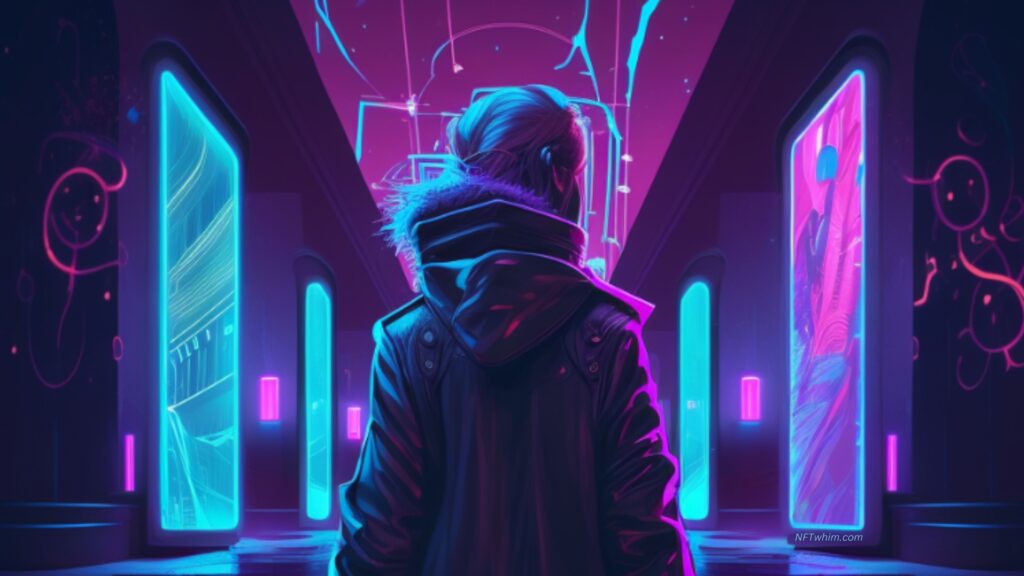
Preparing your art for NFT sale
Once you have created your NFT art, the next step is to prepare it for sale on an NFT marketplace. Start by creating a detailed description of your art, including the title, medium, and any other relevant details. Be sure to also include high-quality images or videos that showcase your art and its unique features.
When setting a price for your NFT art, consider the rarity of the piece, the quality of the artwork, and the current market trends. Do some research on similar pieces that have sold in the past to get an idea of the going rate for similar work.
Listing your NFT art for sale is the final step in the process. Each marketplace has its own listing process, but generally, you will need to provide a title, description, and image of your art, as well as set the price and any additional terms and conditions. Once your art is listed, potential buyers can view and bid on it.
Before listing your NFT art for sale however, it’s important to ensure that your smart contract is accurate and includes all relevant details about the sale and ownership of the piece.
In summary, creating NFT art requires a focus on uniqueness and value, as well as technical knowledge of the format and smart contract requirements. By experimenting with different styles and mediums, honing your skills, and staying up-to-date on market trends, you can create successful and valuable NFT art.
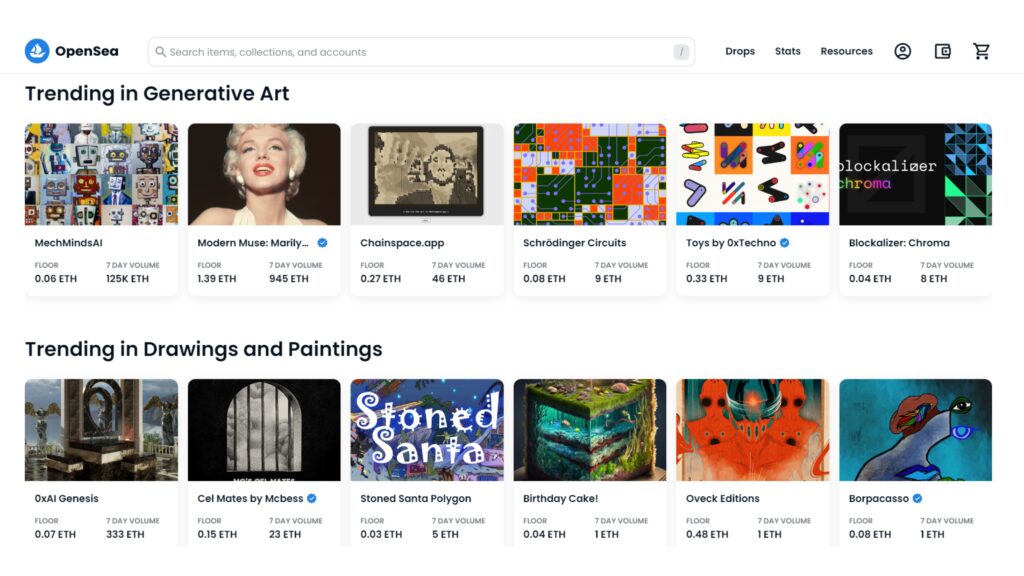
Selling NFT Art
Once you have created your NFT art and listed at a marketplace, the next step is to actually sell it. As we mentioned earlier, setting the right price is crucial, as it will determine the value of your art and how much you can earn from it, and how willing potenetial buyers will be to purchase it.
It’s important to note that the NFT market is highly volatile, and the value of your art can fluctuate wildly. You should also be prepared for the possibility of your art not selling immediately (or at all), and be patient in waiting for the right buyer to come along. You may want to consider starting with a lower price to attract buyers and build your reputation on the platform.
Promoting your art on social media can also help attract potential buyers. Twitter, Instagram, and TikTok are popular platforms where artists showcase their work and connect with their audience. Be sure to use relevant hashtags and tag the NFT marketplace where your art is listed.
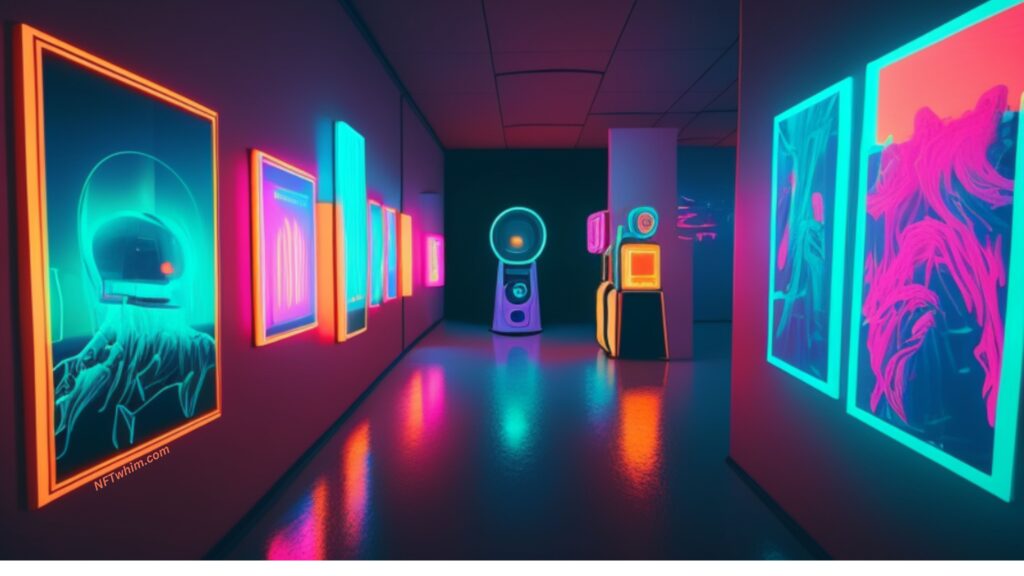
Navigating the NFT Marketplace
Navigating the NFT marketplace can be overwhelming, especially for new artists. There are several things to consider when buying or selling NFT art, including the bidding process, and how to avoid scams.
- The Bidding Process: Most NFT marketplaces provide the option of using an auction-style bidding system, where buyers bid on an art piece until the auction ends. The highest bidder wins the art and pays the seller the winning bid amount. Some marketplaces also allow for instant purchases, where a buyer can purchase an NFT for a set price without having to bid.
- Avoiding Scams: In addition, since NFT marketplaces unfortunately has attracted a few scammers looking to take advantage of unsuspecting artists, you should take precautions to not get tricked, and always stay alert: Do your due diligence, and be wary of anyone contacting you and asking for personal information or offering deals that seem too good to be true.
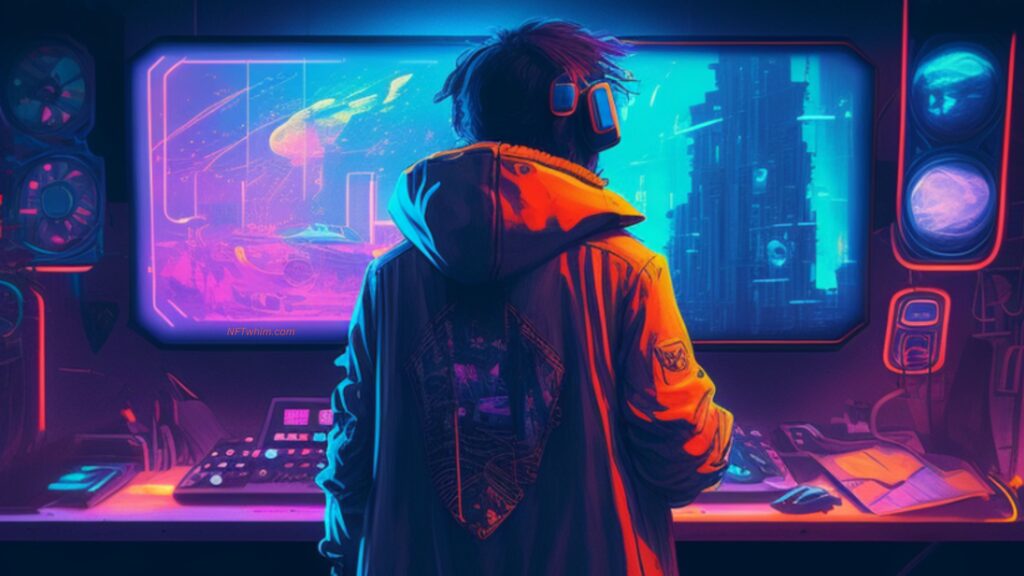
Summing it up
In conclusion, NFT art is a rapidly growing industry with endless possibilities for creators. With the right knowledge and tools, anyone can start creating and selling NFT art. Understanding the basics of blockchain technology, creating unique and valuable art, and navigating the NFT marketplace are all key components to success in this field.
As the world becomes more digital and technology advances, the demand for NFT art is only going to increase. This is an exciting time to be a part of this industry, and I encourage anyone who is interested in creating or selling NFT art to get started today. With hard work and dedication, you can turn your passion for art into a profitable business!
Robin
Author: Robin Olsson
Author Bio: I’m Robin and on this website, I share everything I’ve learned since getting into NFTs in 2021. I have a background in research and I’ve been in crypto for several years. You can read more about me here.
